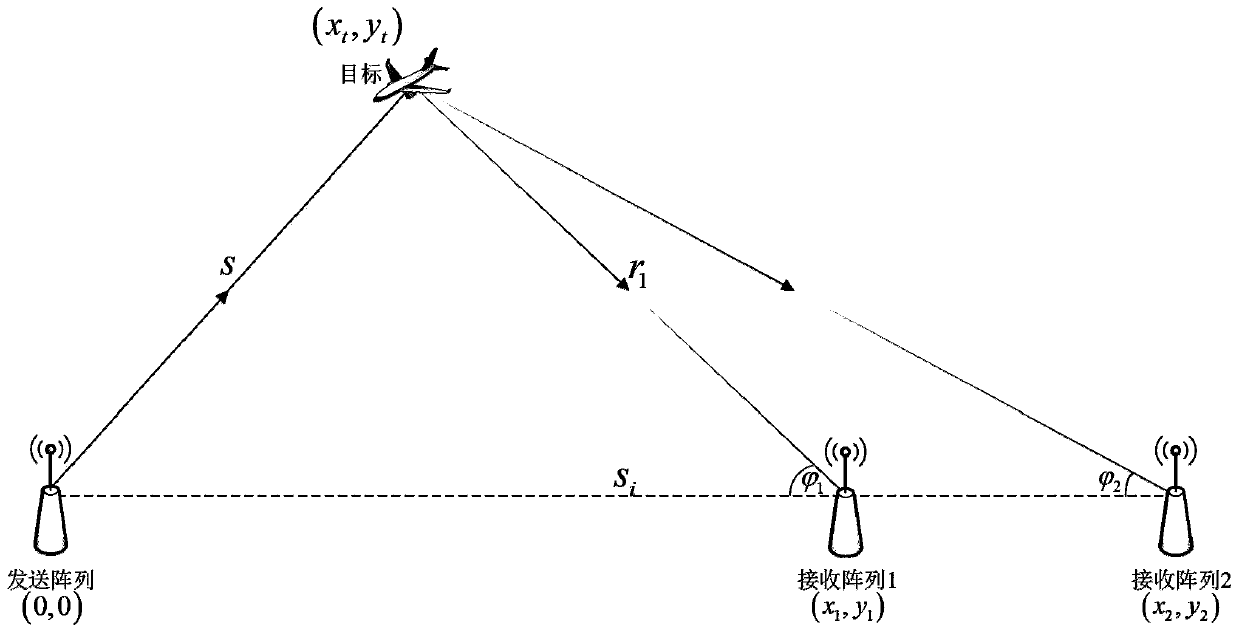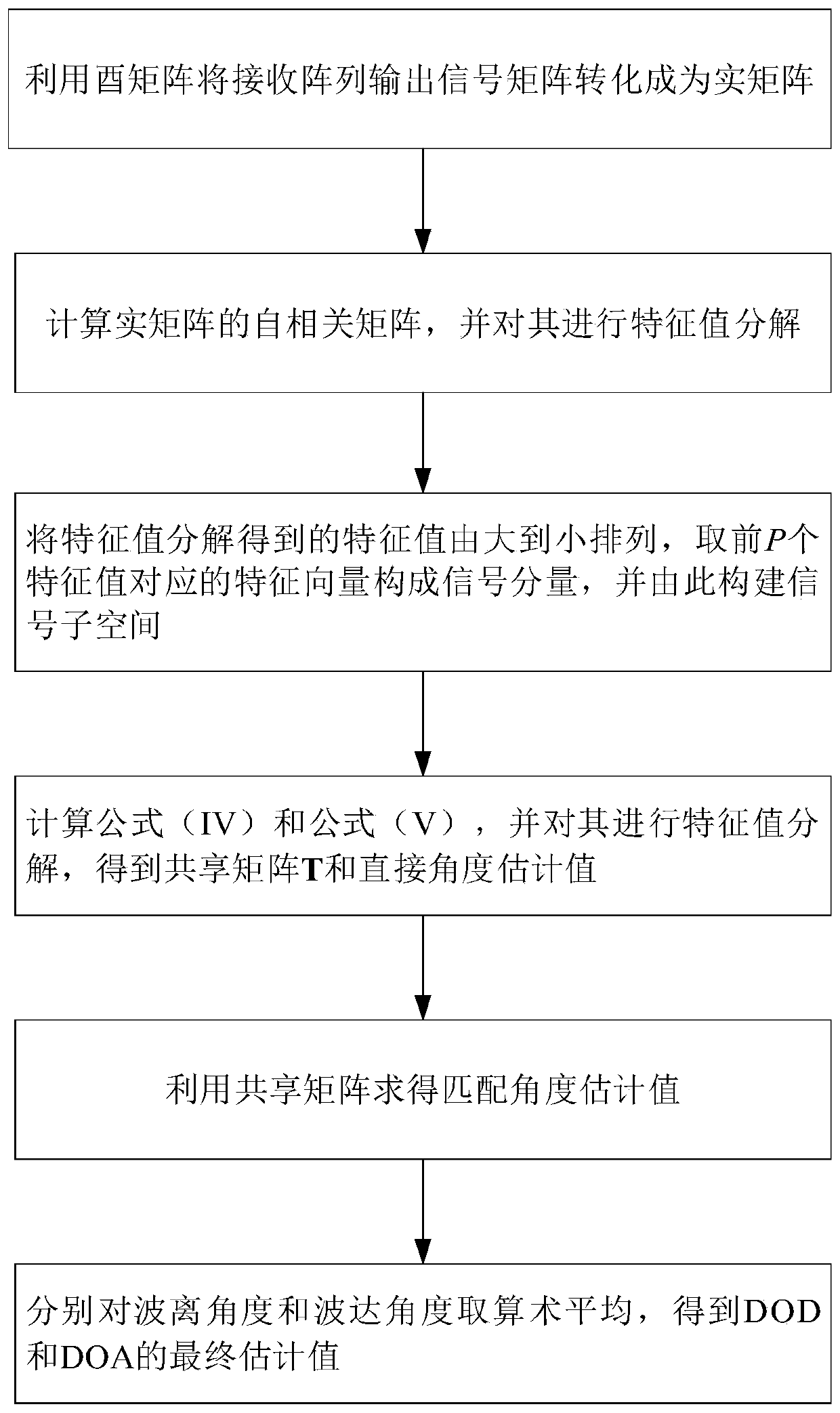High-performance hybrid positioning method based on angle and signal TDOA estimation and implementation device of method
A hybrid positioning and angle estimation technology, applied in the field of navigation and positioning, can solve the problems of reducing computing efficiency and the influence of angle estimation, and achieve the effect of low computational complexity and high positioning accuracy
- Summary
- Abstract
- Description
- Claims
- Application Information
AI Technical Summary
Problems solved by technology
Method used
Image
Examples
Embodiment 1
[0089] A high-performance hybrid positioning method based on angle and signal time difference of arrival estimation, such as image 3 shown, including the following steps:
[0090] (1) Estimating the angle of arrival of the target based on the MIMO bistatic radar, and describing the target position estimation error caused by the estimation of the angle of arrival; based on the MIMO bistatic radar system, a unitary matrix is introduced, and by sharing the eigenvectors of the transmitting end and the receiving end, The classic high-resolution angle estimation algorithm is improved to a DOA estimation method with lower computational complexity and higher positioning accuracy. At the same time, according to the relationship between the angle of arrival, the launch array coordinates and the target coordinates, the target coordinates and position errors are determined. relation. Including the following steps:
[0091] Through the joint estimation algorithm of D0D and DOA, the es...
Embodiment 2
[0101] According to a high-performance hybrid positioning method based on angle and signal time difference of arrival estimation described in Embodiment 1, the difference lies in:
[0102] Step (1), including steps as follows:
[0103] A. Based on MIMO bistatic radar, deploy the radar deployment model, such as figure 1 As shown, the radar deployment model includes the target, the transmitting array, the first receiving array, and the second receiving array. Referring to the MIMO bistatic radar, the transmitting array, the first receiving array, and the second receiving array are set in different areas, and the sending The array, the first receiving array, and the second receiving array all contain multiple array elements, and the target is set as a far-field target, that is, the azimuth angle of each array element in the transmitting array, the first receiving array, and the second receiving array depends on To establish the output signal model X of the receiving array, as sh...
Embodiment 3
[0129] According to a high-performance hybrid positioning method based on angle and signal time difference of arrival estimation described in Embodiment 1 or 2, the difference is that:
[0130] Step (2), consider the signal arrival time difference of the radar deployment model, and describe the signal arrival distance error when TDOA estimation (that is, the n mentioned below TDOA ) and the relationship of the target coordinates, including the following steps:
[0131] Assuming that the electromagnetic wave emitted by the transmitting end is reflected by the UAV, it takes t time for the i-th receiving end to receive it i , the time required for the electromagnetic wave to be directly received by the i-th receiving end after being emitted by the transmitting end is t′ i , the time difference between the two propagation modes is Δτ i = t i -t' i , the distance difference between the two propagation modes is s Δi =cΔτ i ; c is the speed of electromagnetic wave propagation, ...
PUM
 Login to View More
Login to View More Abstract
Description
Claims
Application Information
 Login to View More
Login to View More - R&D
- Intellectual Property
- Life Sciences
- Materials
- Tech Scout
- Unparalleled Data Quality
- Higher Quality Content
- 60% Fewer Hallucinations
Browse by: Latest US Patents, China's latest patents, Technical Efficacy Thesaurus, Application Domain, Technology Topic, Popular Technical Reports.
© 2025 PatSnap. All rights reserved.Legal|Privacy policy|Modern Slavery Act Transparency Statement|Sitemap|About US| Contact US: help@patsnap.com



